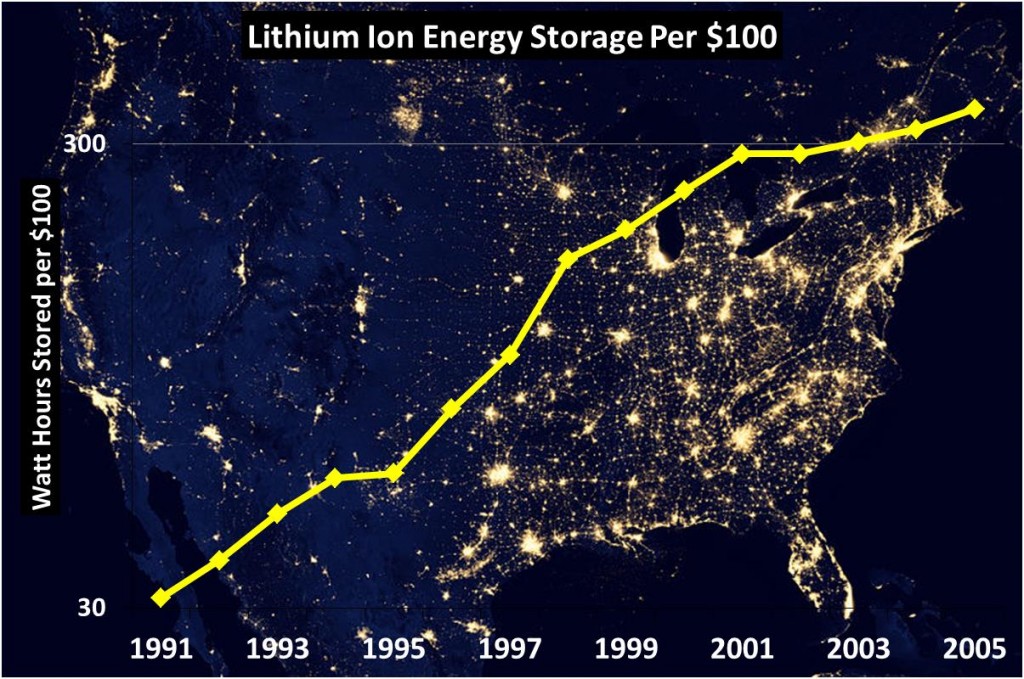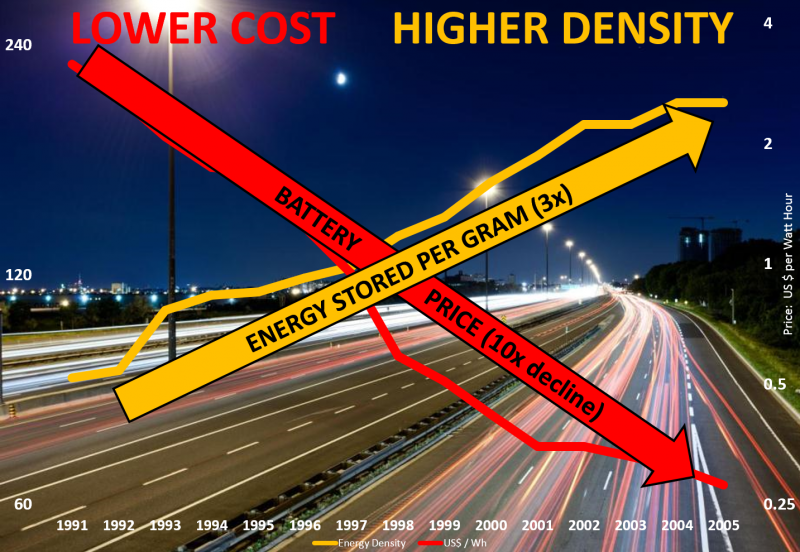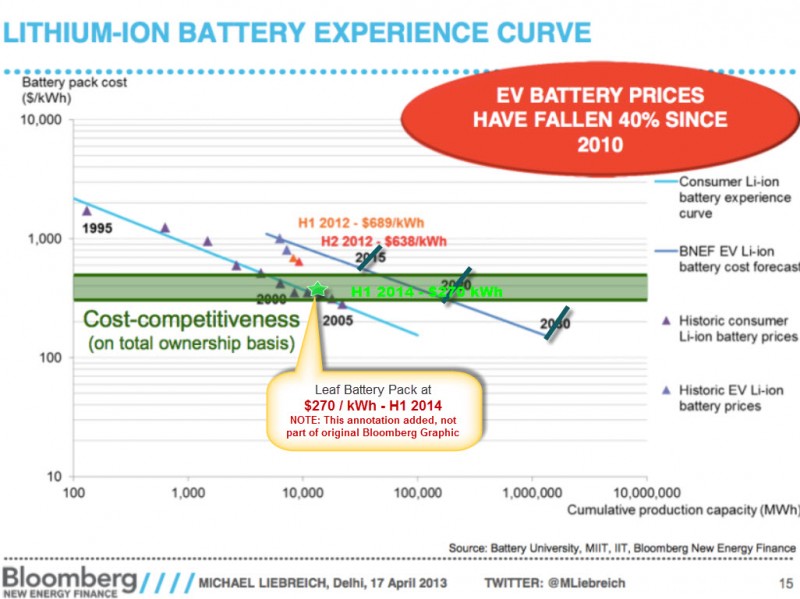Energy Storage Gets Exponentially Cheaper Too
At MIT Technology Review today was an article on Sun Catalytix’s new flow battery intended for grid-scale storage, which Sun Catalytix believes will drop grid-scale storage prices in half. As the article notes, several other storage technology companies are also working on driving down the cost of energy storage:
Sun Catalytix is also competing with companies making compressed-air storage machines and batteries with their own novel chemistries, such as a zinc-air battery from Eos Energy Storage and a liquid-metal battery from Ambri. (See “Cheap Batteries for Backup Renewable Energy” and “Ambri’s Better Battery.”)
Which brought to mind a fact that many still don’t realize. There is a fairly well established exponential price reduction in the cost of energy storage. This is not quite as well established as the exponential decline in solar power price per watt but it has a more than 20 year history.
As exhibit 1, here’s the trend of lithium ion batteries, on a log scale, between 1991 and 2005. I’ve inverted the scale here. Instead of showing cost per unit of storage, I’m showing how much energy you can store for $100 worth of batteries. And again, this is a logarithmic scale – so a straight line means an exponential rate of change. And over this 15 year period, the amount of energy you could store for $100 went up by a factor of 11.
The source of that data is a 2009 Duke study you can find here.
UPDATE:
Here’s an alternate version of the above graphic that adds energy density, too. (Energy density is the amount of energy that can be stored per unit mass or volume – in this case, mass.) The scale here is still logarithmic, but the downward arrow in price indicates prices going down.
BATTERY INNOVATION CONTINUING
Nor do we have any reason to believe the pace of battery price innovation has slowed since then.
For instance, Michael Liebrich at Bloomberg New Energy Finance reports that electric vehicle battery prices fell 40% between 2010 and early 2013. And Bloomberg NEF sees an exponential experience curve for lithium-ion batteries of the same sort that exists for solar photovoltaic. What does that mean? The experience curve is a sort of generalization of a trend like Moore’s Law. It’s the general observation that as an industry scales and builds more of something, prices drop. And in batteries, as in solar, there is one.
A back-of-envelope says we need to bring the cost of energy storage down by another factor of 10 in order to make grid-scale storage cheap enough to displace most fossil use for electricity. On current trend, it looks like we’ll be there in the next 15-20 years.
GRID AND MOBILE DIVERGENCE
Arguably, with flow batteries like Sun Catalytix, this may be much faster. Grid storage is likely to diverge from mobile and transportation batteries. Lithium-ion batteries are dense and compact. Flow batteries are bulky and heavy. You wouldn’t want them for your car or your mobile device, but they hold the promise of being even cheaper. If they fulfill that promise, we may achieve grid-viable batteries far sooner than the 15-20 year timeframe.
Ultimately, there’s more than enough clean energy to power the world with zero carbon emissions. And it sure looks like we’ll be able to store it.




